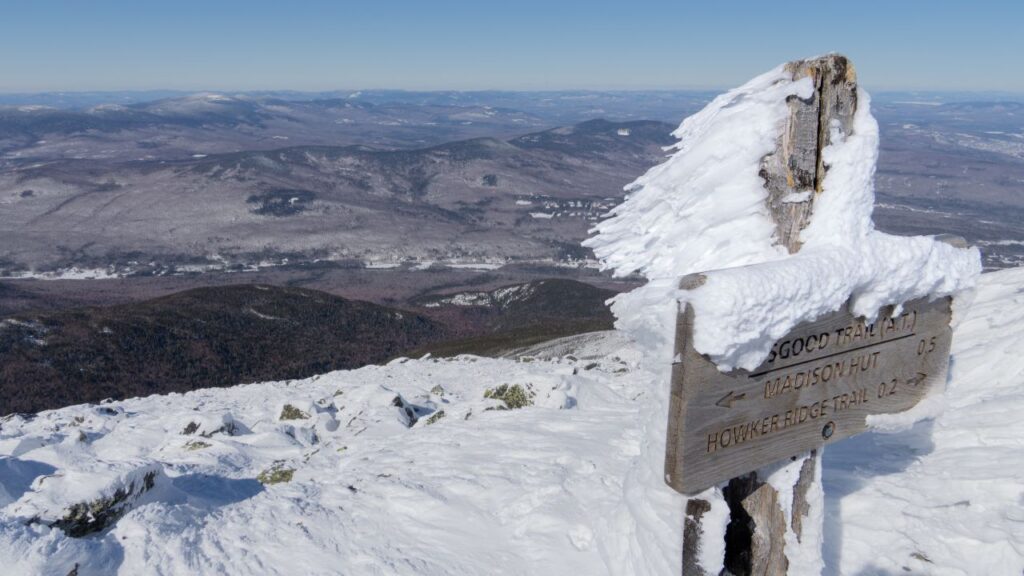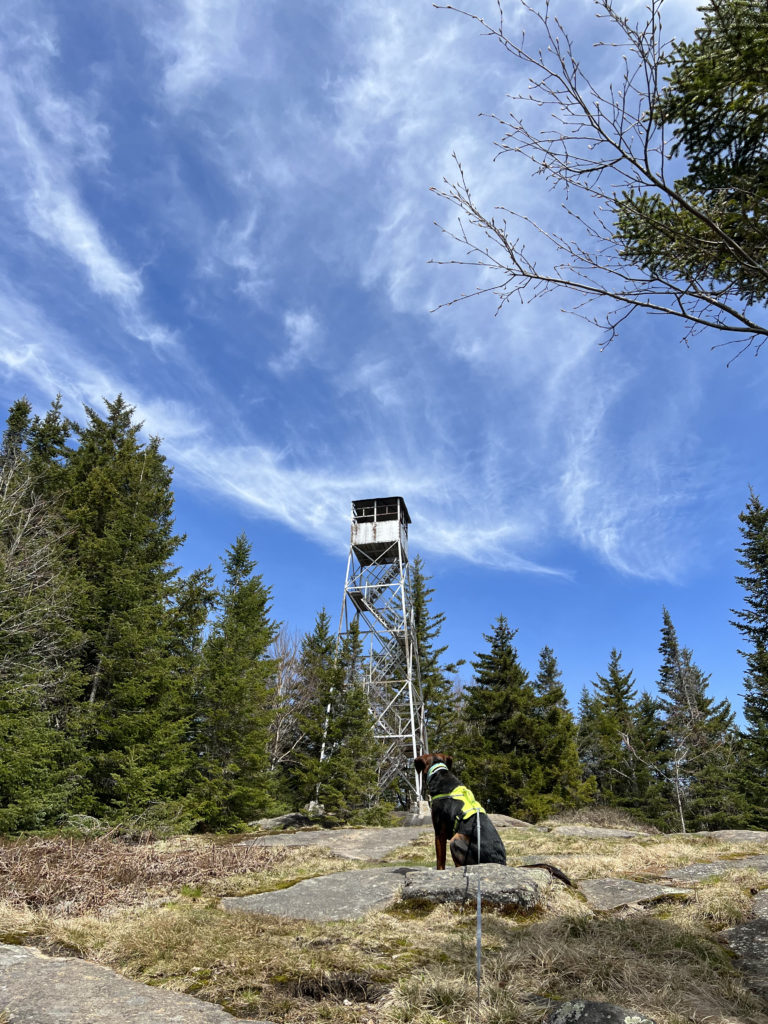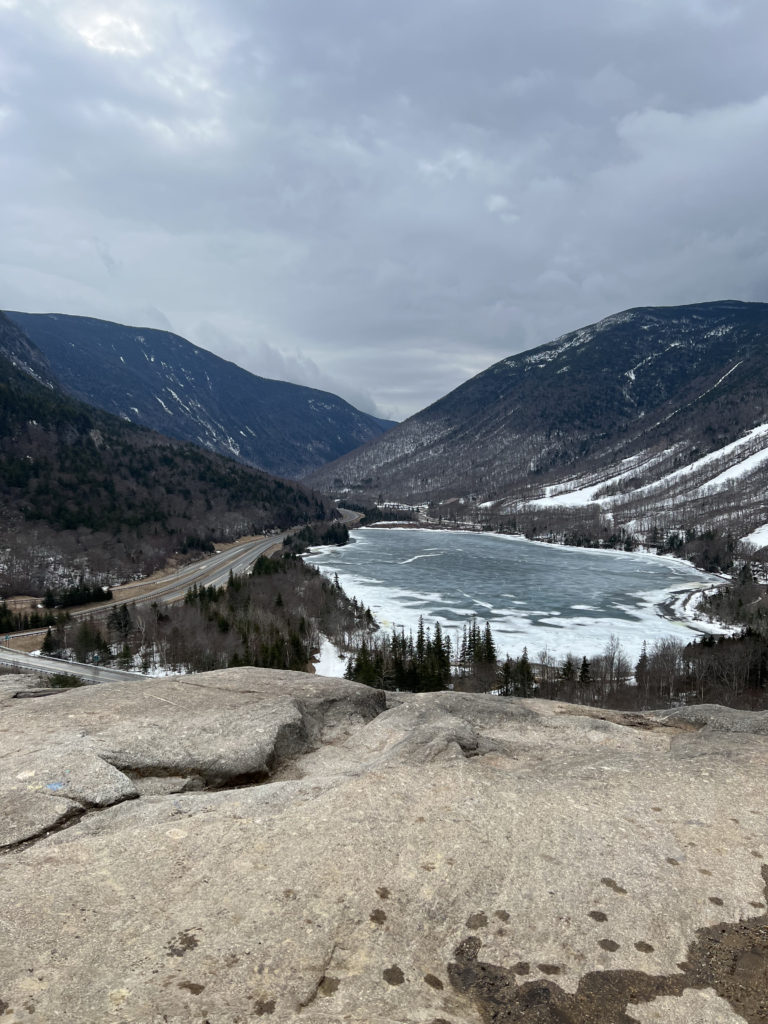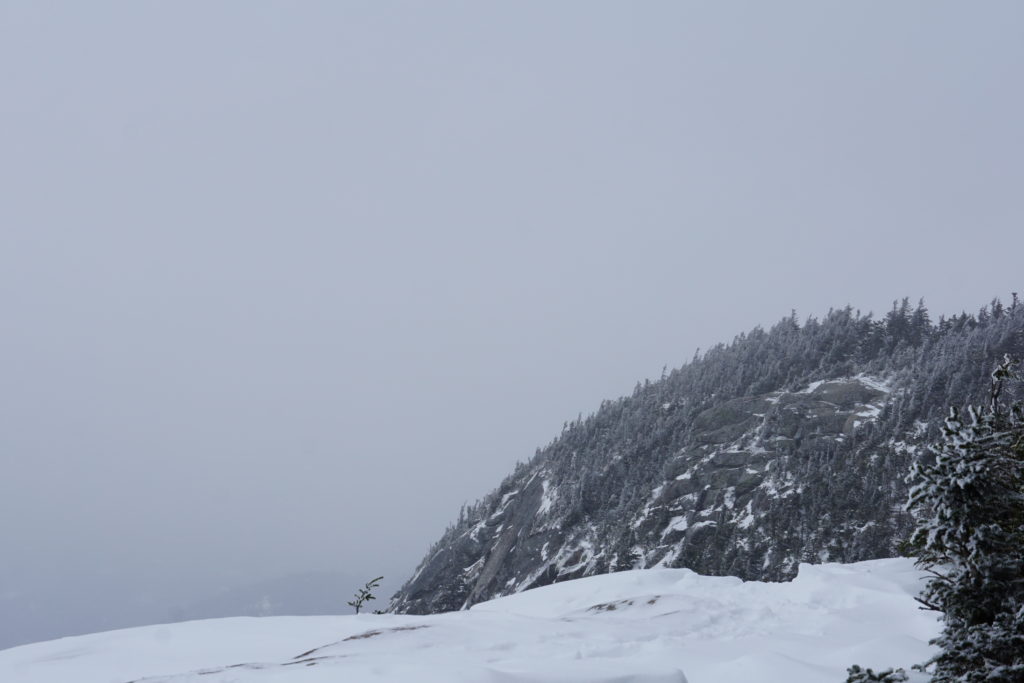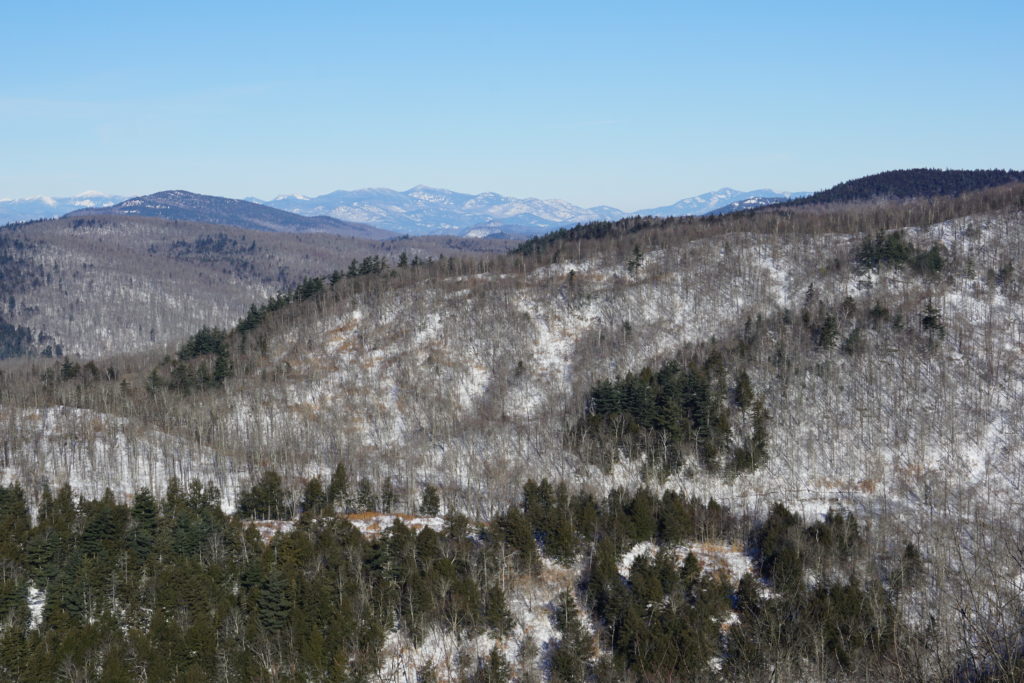Your Guide to Hiking Mount Madison in Winter via the Valley Way Trail
Mount Madison – Description and Background
The Presidential Range of New Hampshire is a hiker’s dream, but in winter, it transforms into a realm of stark beauty and formidable challenge. Mount Madison, standing tall and proud at 5,367 feet (1,636 meters), is the fifth tallest mountain in the state of New Hampshire. The name of the mountain honors President James Madison.
Hiking Mount Madison in winter, especially via the popular Valley Way route, demands respect, preparation, and a healthy dose of grit. The mountain has a rugged, exposed terrain which contributes to its reputation for extreme weather. It can mirror the conditions found on the nearby Mount Washington which is known to have some of the world’s worst weather!
The mountain’s geology, primarily composed of hard, erosion-resistant rock, has shaped its dramatic, alpine landscape. Mount Madison has been a popular destination for hikers and mountaineers since the 19th century, with trails like Valley Way and Osgood Trail providing access to its challenging summit.
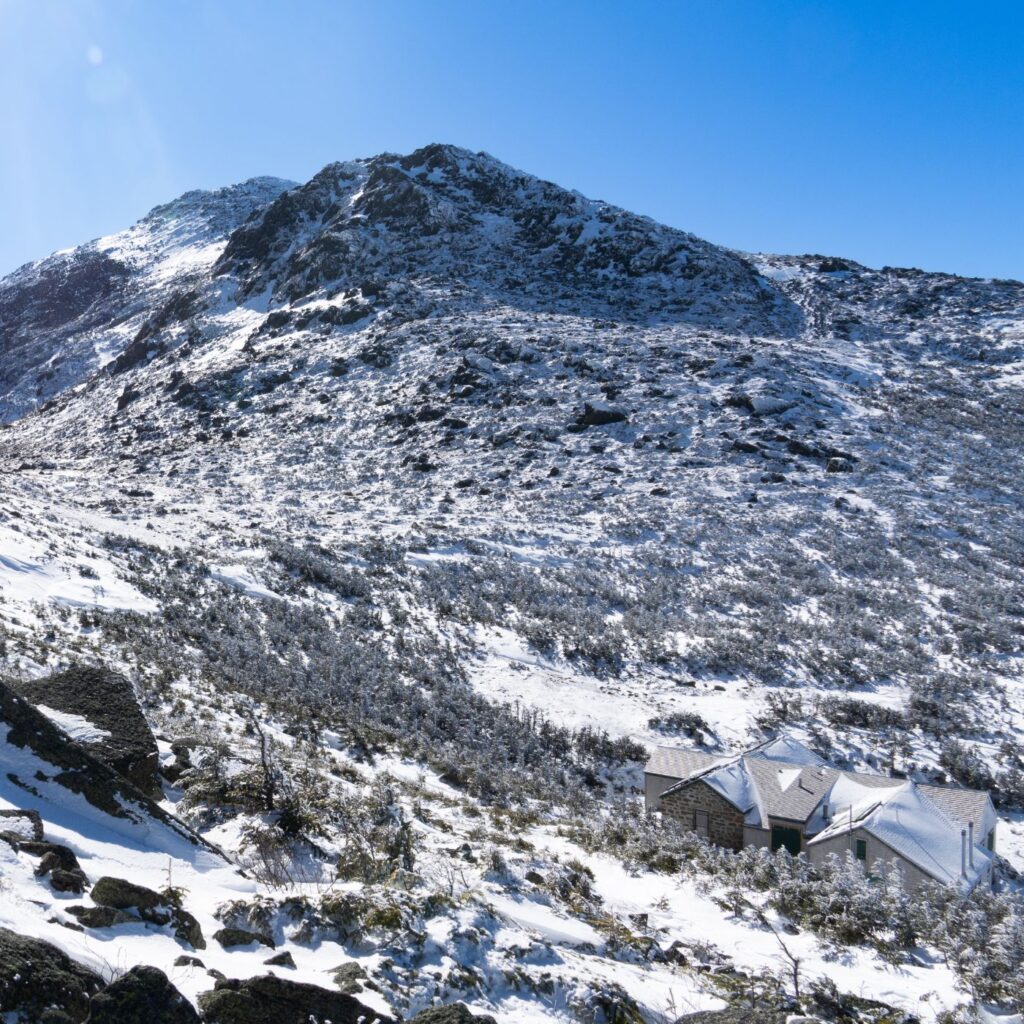
Planning for Mount Madison to Have a Successful Summit
Planning for A Presidential Peak in Winter Will Be Paramount
WEATHER: The Mount Washington Observatory, located on the summit of the nearby Mount Washington, holds the world record for recorded surface windspeed at 231 mph (372 km/h). That will give you an idea of the weather that can occur in the Presidential Range.
Check the forecasts for this and the surrounding mountains daily, as well as the morning of your hike. Conditions in these mountains change very quickly. Hence why this range has had so many fatalities and rescues.
Avalanche Awareness: The Presidential Range is known to have avalanches. The Mount Washington Avalanche Center’s Avalanche Center’s daily advisory is well worth checking before embarking into those mountains. Avalanches are more common on slopes of 30 and 45 degrees. Understanding your terrain will help keep you safe.
Choosing Your Route: For this post, the focus will be the Valley Way to Madison Spring Hut. It is a classic route that brings you to the hut in roughly 3.8 miles. The elevation gain to the hut is a strenuous 3,400 feet (1,036 meters). It is another few hundred feet of elevation gain from the hut to the summit of Mount Madison.
Daylight: It is easy to forget, but remember that there are much less hours of daylight in the winter. In the heart of the cold season, you might only have 9 hours of daylight.
Your Winter Gear Armory
Appropriate Gear is Your Lifeline for Winter in the Presidential Range
- Boots Made for Winter: Sturdy, waterproof boots with excellent ankle support are a must. I use the brand Vasque.
- Crampons/Microspikes & Ice Axe: Non-negotiable. Practice using an ice axe before hitting the trail and putting on your spikes.
- Layer Up: Go for moisture-wicking base layer, insulating mid-layer, and a waterproof/windproof outer shell.
- Warmth is Key: Hat, gloves, mittens, and a neck gaiter/buff are essential. I personally use a combo of gloves and Marmot expedition mittens that I found works really well.
- Navigation: Map, compass, GPS. Garmin has some great options.
- Light the Way: Headlamp with extra batteries.
- Emergency Essentials: Bivy sack, first-aid kit, and plenty of high energy food. Hydration should be kept within your pack to prevent it from freezing. Having hot drinks might be beneficial if it
- Trekking Poles (Optional imo): Having poles can help save your knees and improve stability. They can also be used to test snowpack.
- Protect Your Eyes: Sunglasses/Goggles are crucial for mountain climbing in winter to protect eyes from the intense glare and harmful UV radiation reflected off snow and ice. Snow blindness is not something you want to deal with as it is a painful and temporary condition that can damage the cornea.
Hitting the Trail: Valley Way to the Summit of Mount Madison
Trailhead
The parking area for the Valley Way Trail to the Mount Madison Spring hut is the Appalachia Trailhead parking area on Route 2 in Randolph. It is a popular trailhead so you will want to get there early and/or plan for alternate routes and parking areas. Click the screenshot below for the directions on Google Maps.
The Trail
The trail up to the Madison Spring Hut is in tree line right up until the Madison Spring Hut. There are a few sections where you can head off onto Watson Path which is a straight shot to the summit of Mount Madison. In the winter though, Watson Path does not see as much traffic and the trail might not be broken. This is because you end up above tree line and exposed for a longer period of time to the elements.
While you can take Watson Path, this post will continue to be focused on the Valley Way Trail to the Madison Spring Hut. You also might be more likely to have a successful summit day if you end up on a trail that has tree line coverage for a longer period.
The elevation gain does not stop on the trail, the push up the Mount Madison is constant so make sure your legs are fresh!
Madison Spring Hut
After the mileage and consistent climbing, the Madison Spring Hut will be a much welcomed sight. Although the hut is only open from June 5th to September 27th, it does provide wind coverage during the winter. There are also some spots where you can sit, have some food and hydrate, and prepare for your summit push.
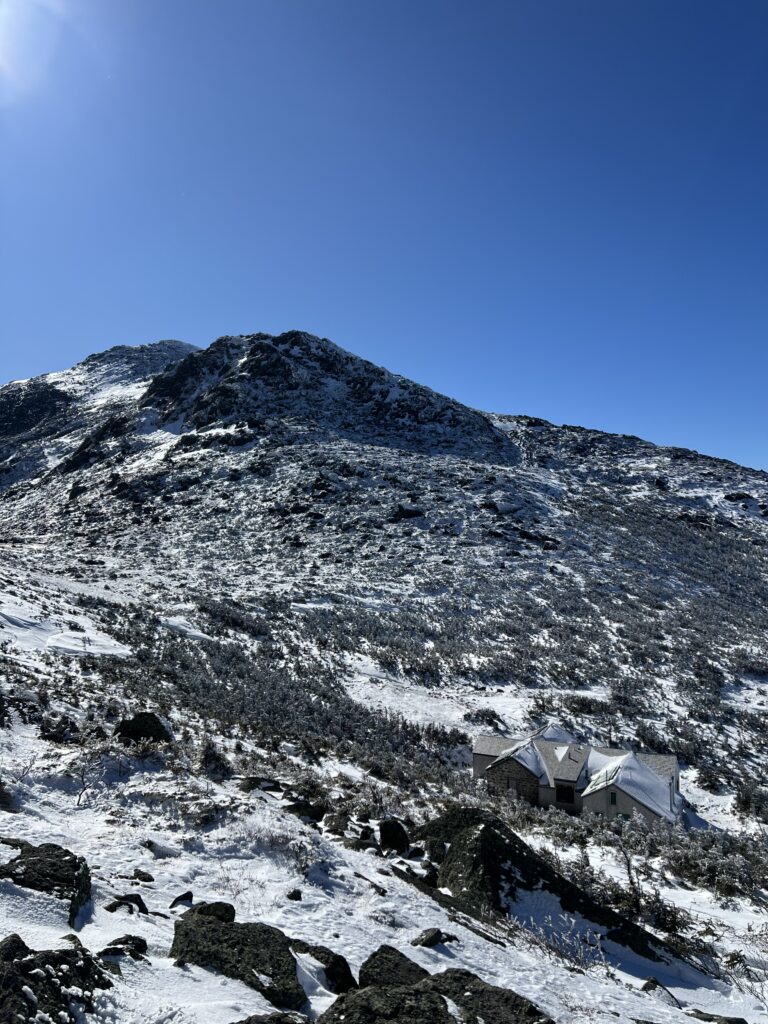

Summit Push!
The section of the climb from the Hut to the summit of Mount Madison is exposed and often very windy. You should be prepared for icy conditions and challenging terrain. This is where those crampons/microspikes come in handy!
The summit itself has a wooden post on it that you can take a photo next to so that you can capture your achievement!
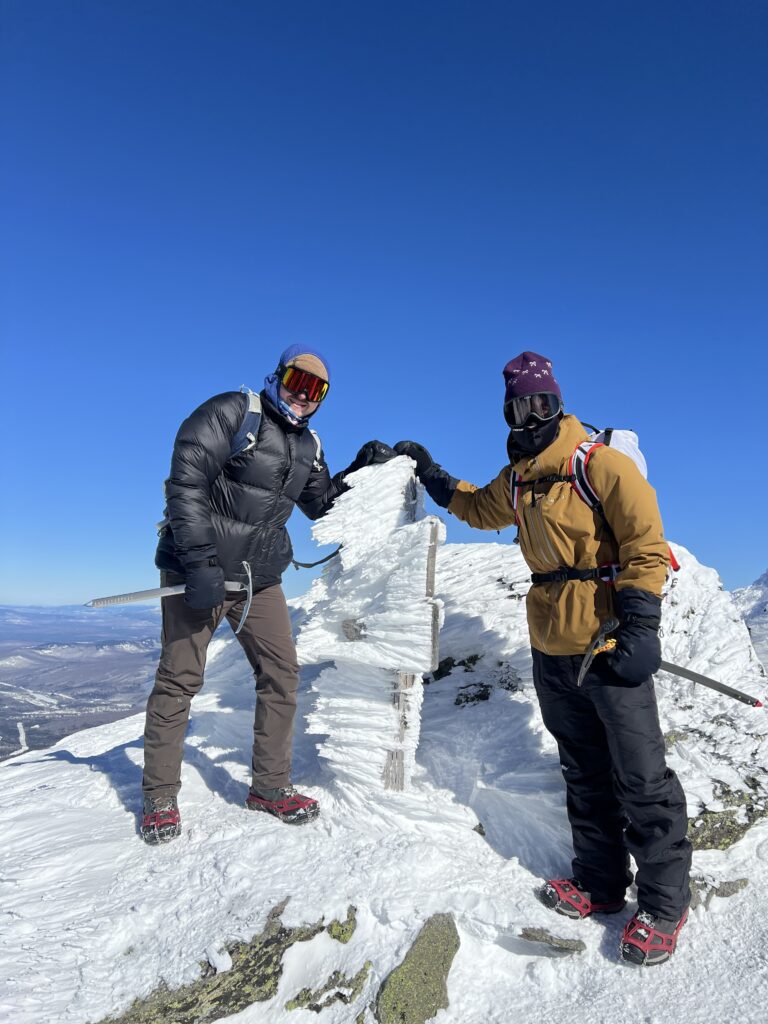
Back to the Mount Madison Trailhead/Notes
Getting Back to the Trailhead
While there are other trails you can take such as Watson Path, you can treat this as an out-and-back trail and descend the same way you climbed up the mountain via the Valley Way Trail.
Safety Tips
- Pace Yourself: Winter hiking is slower and more arduous, so take breaks and stay hydrated. This leads us into the next tip.
- Stay Hydrated: In the cold it is easier to forget to drink water, especially if it is very cold out. You are still sweating, and you need to fuel your body, so take in some fluids as you climb.
- Stay On Trail: It sounds silly, but stay on the trail. When the snow is deep there can be tree wells among other unknowns under your feet. I also advise staying on the trail in the warmer seasons. It will minimize your impact on the natural environment around you.
- Share Your Plans: Tell someone, a friend or family member, your route and expected return time.
- Know When to Turn Back: Your safety is paramount, and if conditions worsen, just turn back and come back another time. The mountain is not going anywhere. It can be disappointing, but there is no point in being brazen just to say you hit the summit in bad weather.
- Know Your Limits: The mountains, especially those in the Presidential Range of the White Mountains, is not the place to be pushing beyond your experience level.
There are hiking groups and guides that you can enlist that will make your climb safer. A simple google search of “mountain guides in North Conway, NH” should suffice!
Check Out Other Blogs and a New Hampshire Youtube Video Below!
Mount Madison – Hiking the Beautiful Presidential Peak in The Winter
Your Guide to Hiking Mount Madison in Winter via the Valley Way Trail Mount Madison…
Hiking Fabrics for Colder Weather – Conquer The Cold
So You Want to Hike Whether it is Cold or Warm Hiking in cold weather…
Owl’s Head Mountain Firetower
Owl’s Head Mountain – Firetower Near Long Lake Owl’s Head Mountain is a mountain located…
Artists Bluff – Franconia Notch
Artists Bluff – A Short Hike In Franconia Notch State Park What up Road Trip…
Giant Mountain – Winter Ascent
Giant mountain in the winter What up Road Trip Warriors!? Giant Mountain is one of…
Swede Mountain fire tower
swede mountain fire tower – a hike near brant lake What’s going on my Road…
Thanks!
Thanks for taking the time to check out this post on Mount Madison in New Hampshire’s Presidential Range! I look forward to sharing more adventures and gear review content! And go subscribe to the Youtube channel!
-Ant
